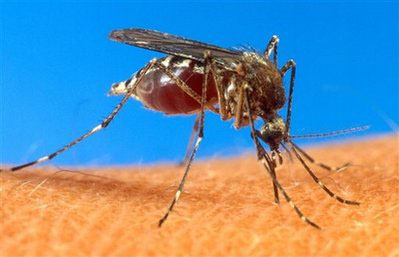|
|
The good news is that the finding could lead to better ways to control mosquitoes, according to Ronald R. Hoy, an author of the report published Thursday in the online edition of the journal Science.
Releasing sterile male mosquitoes is one way to control reproduction of the insects. Observing their mating signals could provide a way to determine if the sterile males can carry out courtship with females, he explained in a telephone interview.
"We don't want to be releasing duds out there, we want to release sterile studs," Hoy said.
That is because the female mosquitoes, once mated, are less responsive to other males and unlikely to mate again. So, if the initial mating is with a sterile male, there are no offspring.
"By studying these flight tone signals, we may be able to determine what kind of information males and females consider important when choosing a mate," added co-author Lauren Cator, a Cornell graduate student.
Hoy, who studies hearing in insects, said scientists knew the buzzing helped males home in on female mosquitoes, but he and his colleagues wondered just what they could hear.
Some mosquitoes match their wing beats when courting, he said, so the researchers decided to see if that was also the case with Aedes aegypti by exposing tethered males and females to one another.
It turned out that the insects did alter their wing beats, but not to match each other.
The females typically have a frequency of about 400 beats per second and the males approximately 600, he explained.
When they encountered one another they adjusted the beats until there was a harmonic of about 1200 vibrations per second — or hertz — an overtone of both the 400 and 600 beats.
The researchers were surprised that the insects could even sense that overtone.
"Who knew they could sense 1200 hertz," said Hoy. They can interact at frequencies they were not supposed to hear. Indeed, it had been widely thought that female mosquitoes were deaf.
To be certain, the researchers implanted electrodes in mosquitoes' Johnston organ, which the insects use for hearing. The insects could sense frequencies up to 2000 hertz.
So, can people hear the mosquito's love song?
Yes, says Hoy, it sounds like the worst ever case of ringing in the ears.
The study was funded through the US Department of Agriculture and a grant from the Foundation for the National Institutes of Health.




No comments:
Post a Comment